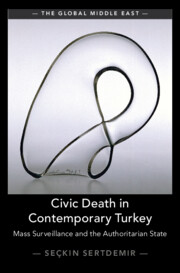Refine search
Actions for selected content:
166 results
The protection of cultural property in times of armed conflict: Ethics, gender, and coloniality
-
- Journal:
- Review of International Studies , First View
- Published online by Cambridge University Press:
- 07 November 2025, pp. 1-18
-
- Article
-
- You have access
- Open access
- HTML
- Export citation
Introduction: Insurance, Then and Now
-
- Book:
- Insuring States in an Uncertain World
- Published online:
- 13 August 2025
- Print publication:
- 18 September 2025, pp 1-6
-
- Chapter
- Export citation
Chapter 7 - Social Work in Need of Activism
- from Part I - Storying-to-Learn: How Stories-that-Matter Help Us Appreciate Social Work in Action
-
-
- Book:
- Learning through Social Work Stories-That-Matter
- Published online:
- 28 August 2025
- Print publication:
- 11 September 2025, pp 92-109
-
- Chapter
- Export citation
7 - The Politics of TPP and TTIP in the United States
-
- Book:
- Every Firm for Itself
- Published online:
- 21 July 2025
- Print publication:
- 07 August 2025, pp 139-169
-
- Chapter
- Export citation
6 - Intra-Industry Trade and Protection in Developed Democracies
-
- Book:
- Every Firm for Itself
- Published online:
- 21 July 2025
- Print publication:
- 07 August 2025, pp 116-138
-
- Chapter
- Export citation
2 - Sources and Basic Principles of Property Law
-
- Book:
- Property Law in China
- Published online:
- 09 July 2025
- Print publication:
- 24 July 2025, pp 26-54
-
- Chapter
- Export citation
2 - Domesticating Mobility
-
- Book:
- Extradition and Empire
- Published online:
- 10 September 2025
- Print publication:
- 03 July 2025, pp 50-83
-
- Chapter
- Export citation
Mass grave mapping and the protection of the dead
-
- Journal:
- International Review of the Red Cross / Volume 107 / Issue 929 / August 2025
- Published online by Cambridge University Press:
- 09 June 2025, pp. 609-630
- Print publication:
- August 2025
-
- Article
-
- You have access
- Open access
- HTML
- Export citation
The Future of Protection in UN Peace Operations
-
- Journal:
- Ethics & International Affairs / Volume 38 / Issue 4 / Winter 2024
- Published online by Cambridge University Press:
- 07 April 2025, pp. 418-432
-
- Article
-
- You have access
- Open access
- HTML
- Export citation
Conclusion
-
- Book:
- Cultural Learning in Urban Schools and Minority Serving Institutions
- Published online:
- 20 March 2025
- Print publication:
- 03 April 2025, pp 201-213
-
- Chapter
- Export citation
2 - Punishment
-
- Book:
- Civic Death in Contemporary Turkey
- Published online:
- 09 January 2025
- Print publication:
- 23 January 2025, pp 61-84
-
- Chapter
- Export citation
Introduction
-
- Book:
- Civic Death in Contemporary Turkey
- Published online:
- 09 January 2025
- Print publication:
- 23 January 2025, pp 1-27
-
- Chapter
- Export citation
4 - When the Hearth Was at Once Warm and Cold
-
- Book:
- Geographies of Gender
- Published online:
- 09 January 2025
- Print publication:
- 23 January 2025, pp 150-184
-
- Chapter
- Export citation
1 - Protection
-
- Book:
- Civic Death in Contemporary Turkey
- Published online:
- 09 January 2025
- Print publication:
- 23 January 2025, pp 28-60
-
- Chapter
- Export citation

Civic Death in Contemporary Turkey
- Mass Surveillance and the Authoritarian State
-
- Published online:
- 09 January 2025
- Print publication:
- 23 January 2025
Redefining the neutral intermediary role: Balancing theoretical ideas with practical realities through the ICRC's experience in Yemen
-
- Journal:
- International Review of the Red Cross / Volume 106 / Issue 927 / December 2024
- Published online by Cambridge University Press:
- 31 October 2024, pp. 1065-1087
- Print publication:
- December 2024
-
- Article
- Export citation
18 - Victims in International Criminal Justice
- from Part V - International Criminal Procedure and Sentencing
-
- Book:
- An Introduction to International Criminal Law and Procedure
- Published online:
- 07 November 2024
- Print publication:
- 18 July 2024, pp 426-445
-
- Chapter
- Export citation
6 - Softening the Capacity Cliff Edge
-
- Book:
- Values and Disorder in Mental Capacity Law
- Published online:
- 25 October 2024
- Print publication:
- 27 June 2024, pp 226-272
-
- Chapter
- Export citation
5 - Reflecting Ambiguity on the Cusp of Capacity
-
- Book:
- Values and Disorder in Mental Capacity Law
- Published online:
- 25 October 2024
- Print publication:
- 27 June 2024, pp 186-225
-
- Chapter
- Export citation
Anything you can do [I can do better]: Exploring women’s agency and gendered protection in state militaries
-
- Journal:
- European Journal of International Security / Volume 9 / Issue 4 / November 2024
- Published online by Cambridge University Press:
- 27 May 2024, pp. 574-587
-
- Article
-
- You have access
- Open access
- HTML
- Export citation
